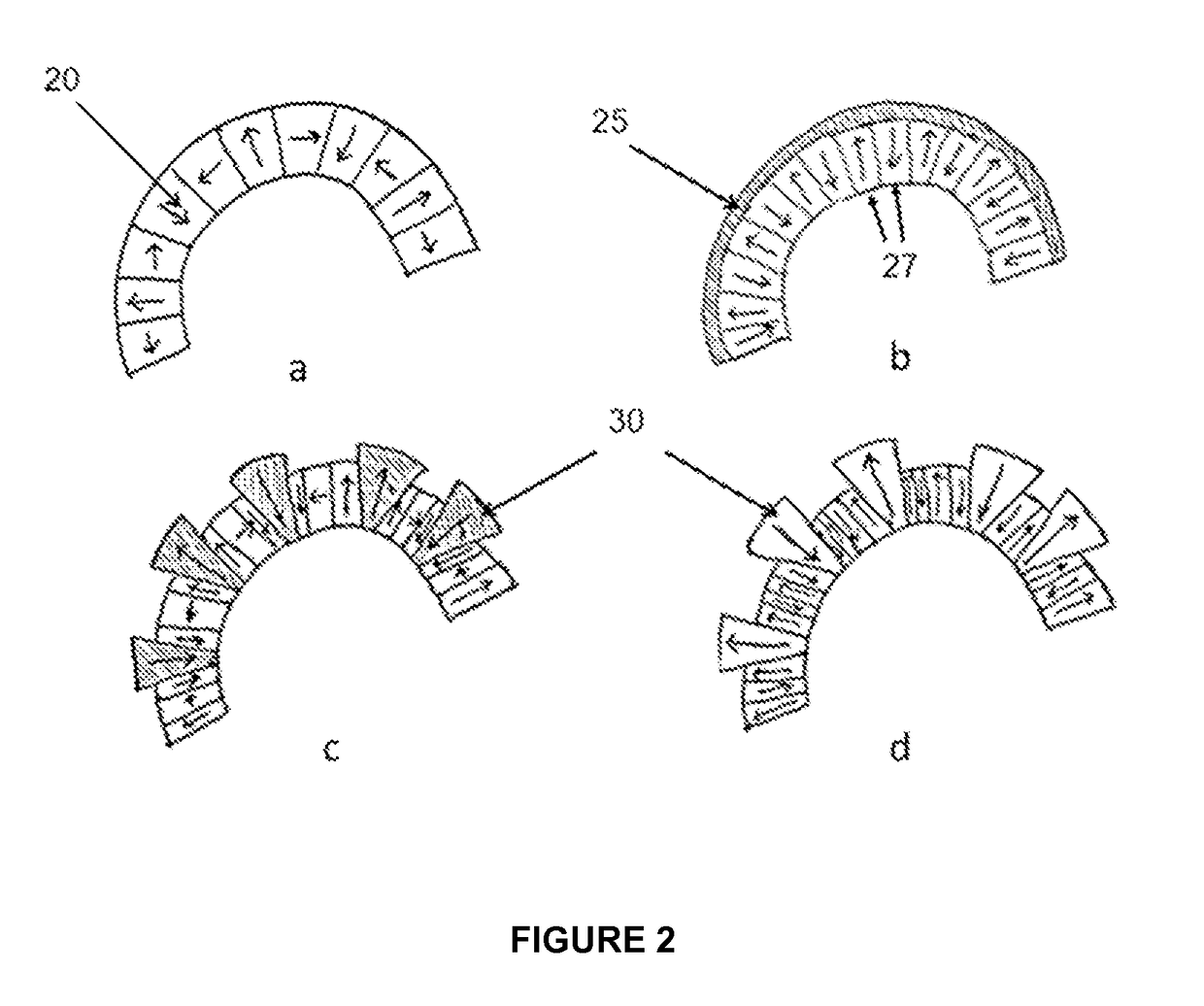Reduced-friction joint with electromagnetically separable bearing surfaces
a bearing surface and electromagnetically separable technology, applied in hip joints, prostheses, medical science, etc., can solve the problems of increasing the risk of implant failure, the current design of total joint replacement (“tjr”) is not optimal for the increasing population, and the patient's life is more likely to be affected, so as to reduce the production of wear particles, promote fluid-film lubrication, and reduce the friction between bearing surfaces
- Summary
- Abstract
- Description
- Claims
- Application Information
AI Technical Summary
Benefits of technology
Problems solved by technology
Method used
Image
Examples
Embodiment Construction
[0031]The application describes a device that incorporates passive electromagnetic induction to reduce friction and, optionally, separate TJR bearing surfaces through the development of a stable, repulsive magnetic force.
[0032]In one embodiment, the disclosure provides a joint replacement coupling comprising opposing joint surfaces, wherein one of the surfaces has an array of magnets therein, and the other of the surfaces has a conductive surface. The magnets are typically in a magnetic portion located in or below the surface of a member of the coupling. The conductive surface is typically located in or on in a conduction portion of a member of the coupling. The magnets are arranged to produce a magnetic field that contacts the conductive surface, wherein relative motion between the opposing joint surfaces induces current loops in the conductive surface and produces a repulsive force against the magnetic field. This force reduces friction between the joint surfaces, optionally separ...
PUM
 Login to View More
Login to View More Abstract
Description
Claims
Application Information
 Login to View More
Login to View More - R&D
- Intellectual Property
- Life Sciences
- Materials
- Tech Scout
- Unparalleled Data Quality
- Higher Quality Content
- 60% Fewer Hallucinations
Browse by: Latest US Patents, China's latest patents, Technical Efficacy Thesaurus, Application Domain, Technology Topic, Popular Technical Reports.
© 2025 PatSnap. All rights reserved.Legal|Privacy policy|Modern Slavery Act Transparency Statement|Sitemap|About US| Contact US: help@patsnap.com



